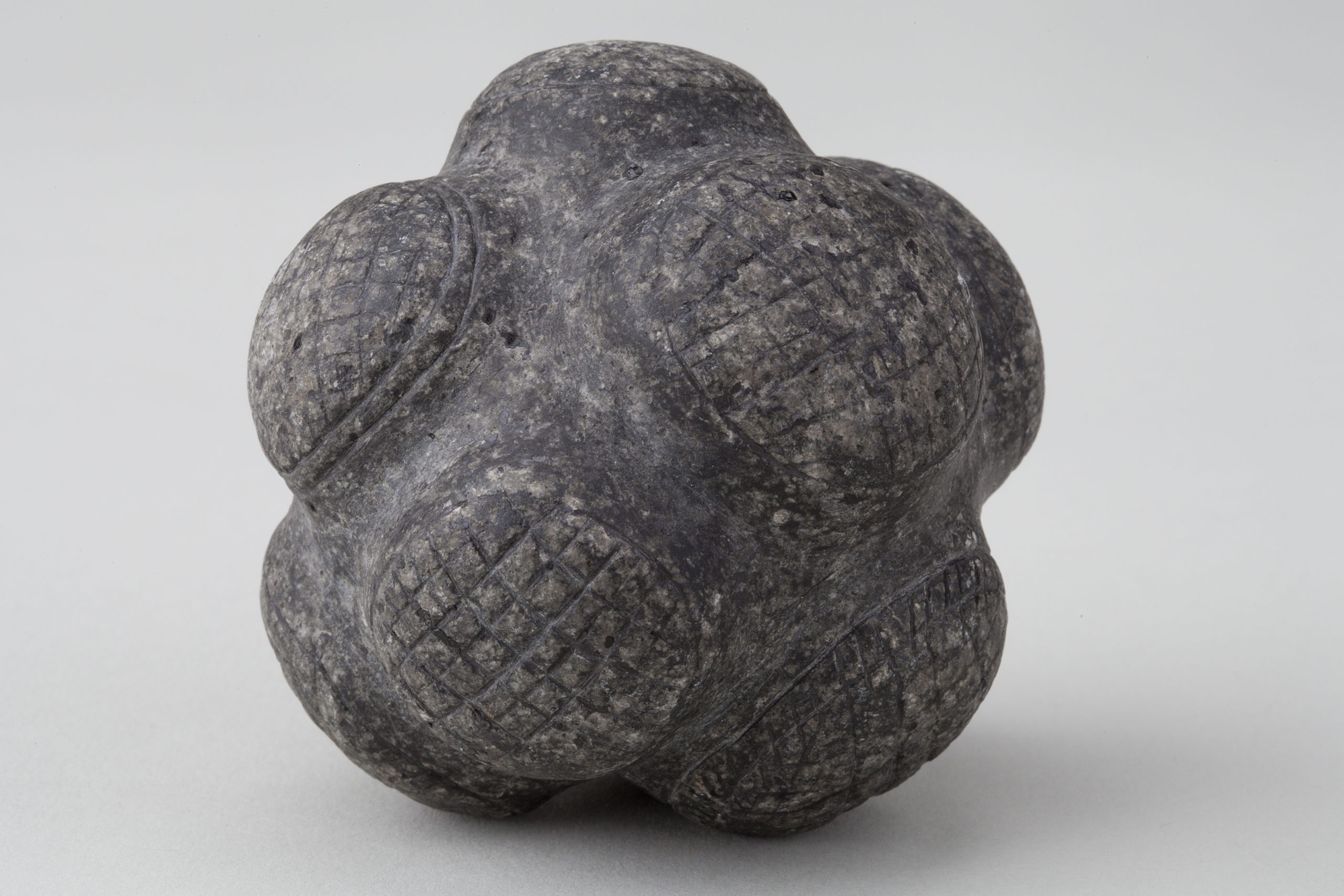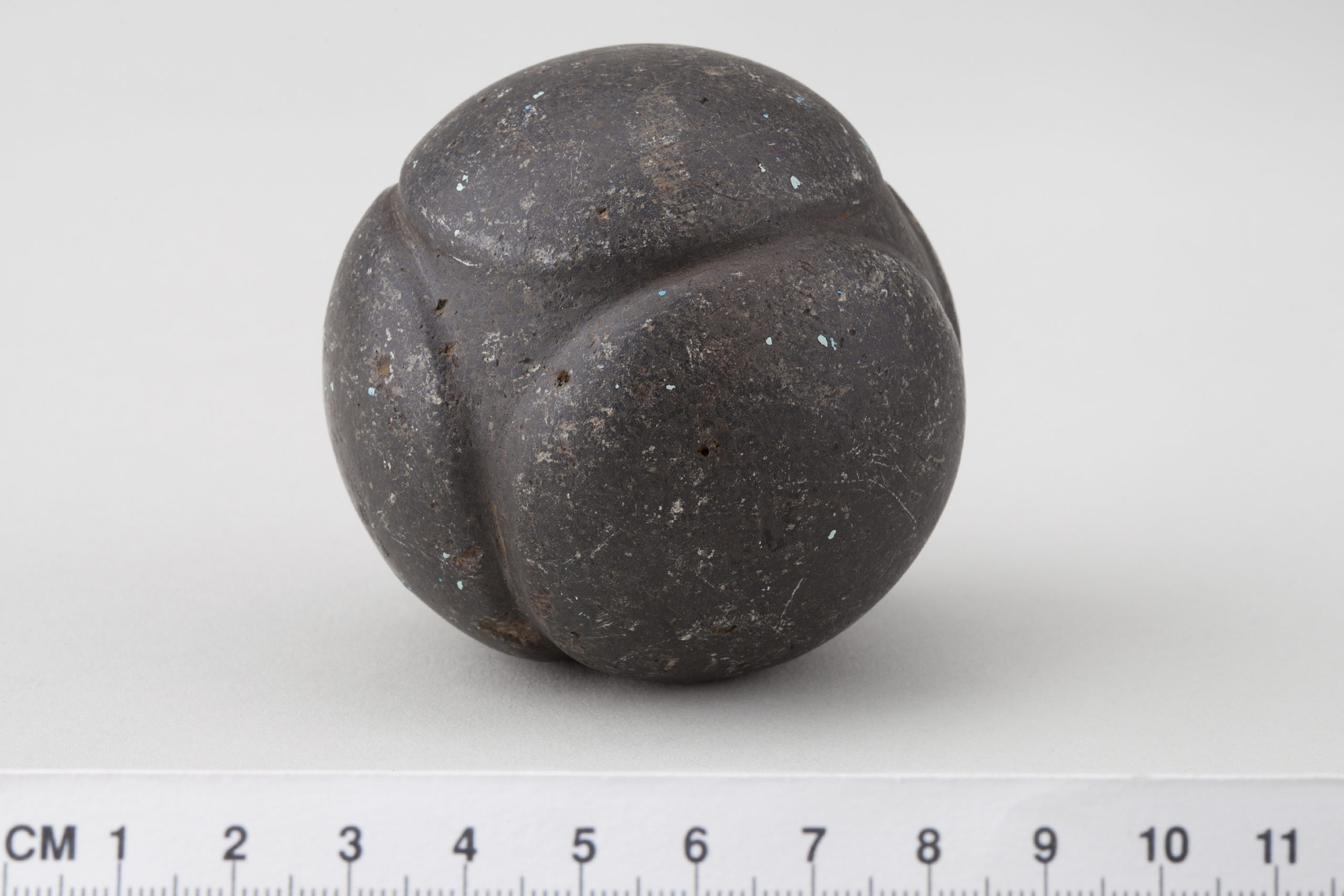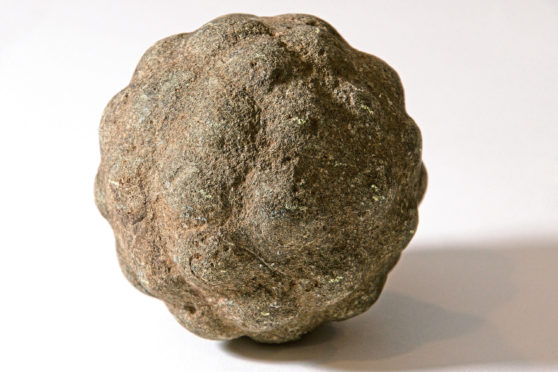These carved stone balls are a selection of the 15 in the Aberdeen Art Gallery & Museum’s collection.
Carved stone balls are nearly an exclusively British phenomenon, with over 425 examples found in the British Isles.
A large proportion have been found in Scotland, especially in the north-east. They are especially interesting as they come in a variety of designs and materials, and were produced across the span of several thousand years.
Experiments have proved that smooth carved stone balls could be produced without metal tools and each ball would have taken hours to shape and smooth.

These balls are interesting because of how little we know about them. Carved balls are rarely found in sites and no ancient person recorded their use. Some have been found at Skara Brae or Ness of Brodgar in Orkney, and a good number have been found close to stone circles.
The purpose of these mysterious balls is still debated by experts today. Theories and experiments seeking to explore these unique artefacts include their use as weapons, status symbols, and Scotland’s earliest art works.
My favourite theory is that they were used as ball bearings to move large stones. The theory suggests that if they were placed in grooved lengths of wood, large stones could be rolled along them.

This would explain the relatively uniform size, about the size of a tennis ball, and that many were found near monumental stone works. There is potential that their importance was more complex, combining several theories.
If they were used as primitive ball bearings, they would have been important to major projects. The makers of these objects were not only highly skilled but had a special relationship with the artistic process of making.
The prehistoric makers were probably held in high regard in their communities as both skilled crafters and integral to creating monolithic structures.
